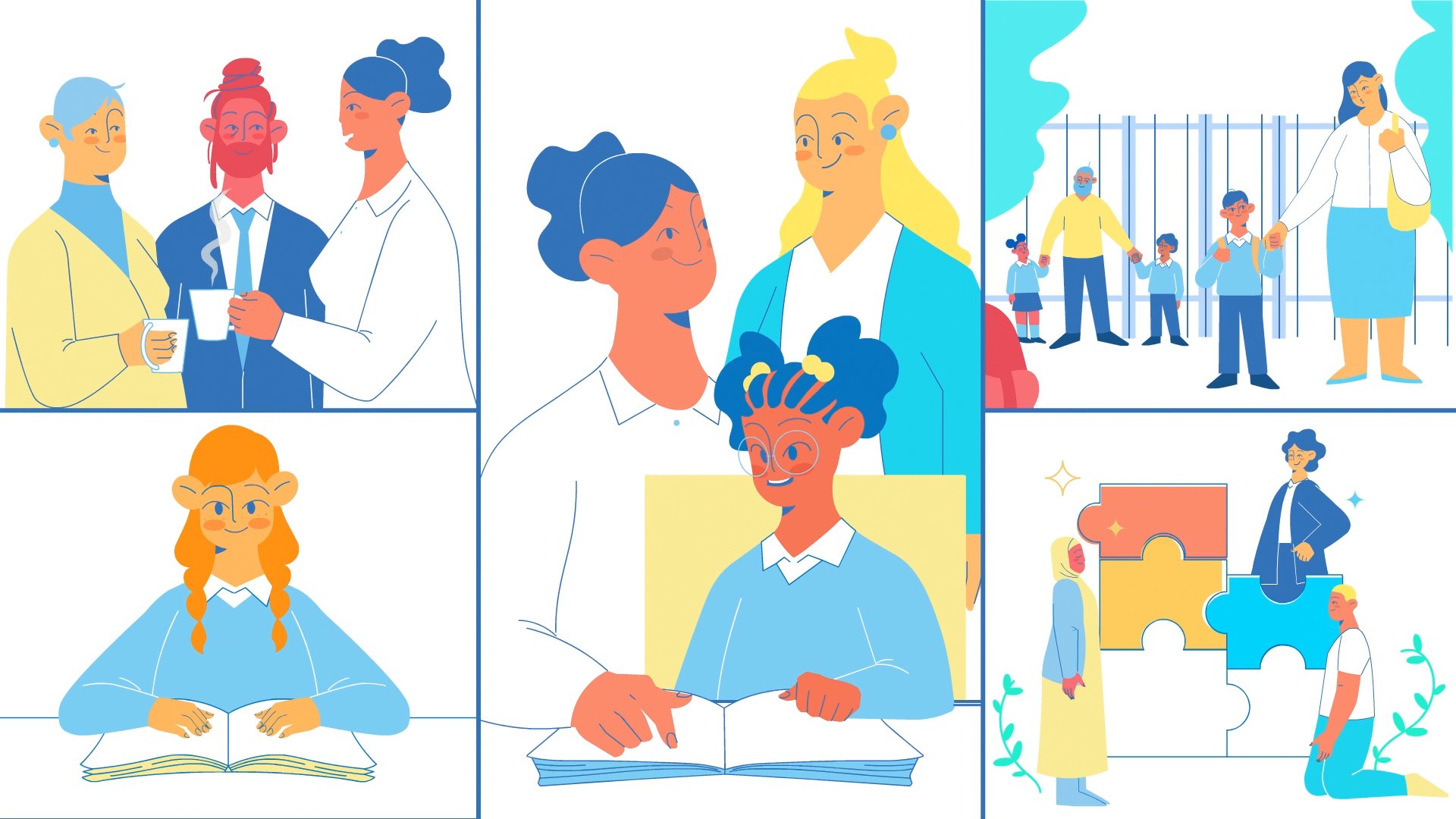Expert insights: Jon Turner from Kilogramme Animation
For our debut edition of Murmur, I spoke to studio co-owner and industry veteran Jon Turner of Manchester based Kilogramme Animation. We spoke about what led him to start up his own studio, the challenges of leading a studio today and what words of advice he can offer burgeoning motion designers, now with 20 years of experience of heading a studio behind him.

Jon Turner
Jon`s journey as an animation studio founder began at the end of his employment with a renowned animation studio – “I was working at Cosgrove Hall Films, which is a company that used to make kids shows when I was growing up, like Danger Mouse, Duckula and Wind in the Willows and things like that. I was working with another guy and he was on a temporary contract and my contract was coming to an end, and he said, why don’t we set something up afterwards? It wasn’t anything I’d ever really considered but I thought ‘If he’s gonna do it then we can do it together’. Jon quickly tells me that the relative safety and comfort of being in a partnership didn’t last long – “I set it up and then he decided that he wanted to do his own thing, so I was left with the company.”
That was in 2005, now Kilogramme Animation Studio delivers for clients nationally and internationally, at home in Manchester for clients like Transport for Greater Manchester, and across the pond for clients like The New York Times, Ben and Jerry and Disney. The studio is now entering its twentieth year.
“That’s a good run”, I tell him.
“It’s not bad.”
It’s actually rare that you get a good budget to go with a good project
20 years in any industry is plenty of time to garner a wealth of experiences, both good and bad. I ask Jon what has been the most challenging aspects of delivering high quality motion design whilst meeting client expectations.
“So the budgets are always- they can be an issue. It’s actually rare that you get a good budget to go with a good project. You’ve got to have the people that can make it and then the money to pay them the right amount, so you’re trying to balance that.”
It’s not surprising that balancing those budgeting constraints with staffing is the first thing that comes to mind, given the state of the country’s purse, but keeping those constraints in mind is important in the decision making aspects throughout the length of any project; especially planning.
“Ages ago someone showed us a piece that cost £50,000 for about three seconds of footage. We weren’t in on what happened with that, so it might have been that £50,000 pounds worth of work was produced, but by the time everyone’s opinion had been heard, there was only three seconds left. It’s weird and I don’t think it makes anyone happy, so we try to never get in that position ourselves”
“For instance it’s making sure you’re not animating things twice and you try to be as clear as possible. I really like creating animatics so that hopefully everyone can get an idea of – ‘This is what this shot’s going to be, this is how it’s going to be framed, this is how long it’s going to last. So I find it better than storyboards.”
When it comes to relationships and communication with clients, most industry professionals, myself included, very much see delegation and direction with a ‘too many cooks spoil the broth’ mindset. We know a clear and precise vision, more often than not, comes from having one or two decision makers at the client’s side.
“It’s finding out about the organisation at the other end.” He goes on to say, “if it’s one person it’s great and you can go back and forth to get somewhere everybody is happy with. But if there are too many cogs it’s harder to coordinate them. People have other jobs they need to do, holidays, illness, et cetera. An afternoon’s work when dealing with one person can turn into days or weeks when going through several hands. This might be absolutely necessary, but it has to be factored into schedules. We colour code our schedules with our work and client feedback. It’s easier for clients to see the impact of feedback taking a day or a week, especially if there are several rounds of it. This should always be informative rather than accusatory. You’re there to help your client to get a good film on time and within budget. You need to make it as painless and fun as possible. Partly because your life will be more pleasant that way, partly because you want them to work with you again and recommend other people to work with you”
Proper planning and communication can sometimes make a low budget project incredibly satisfying, and Jon stresses the role of that ‘one person’ deciding things on the other end;
“It`s lucky when it’s just one person – they know exactly what they want and we can talk back and forth.” He uses Kilogramme’s project with Ofsted as an example. “That was quite nice because it was low budget but we were lucky that we could have people that could work on that budget, and there was no waste on it, there were no shots that were disregarded.”
There are certain things in a project that demand more time and attention and thus a higher price tag. I ask Jon how he justifies things like character animation to a client. He tells me that he likes to keep some character animation on the website, like his Hipster project, as an example of really lovely animation and hopefully, the prospect of receiving that kind of high quality animation, for a client, will justify itself. He uses the ever growing question of AI art to punctuate his thoughts.
“It’s the same with anything. I mean there’s a massive worry about AI at the moment and I think the thing that reassures me is… so there’s an AI romance film that I saw, a romcom, and it’s got all the tropes of a romcom, but it’s dead. There’s no spark, there’s none of the life in there. So I think that’s just one of the many thousands of things you see on Netflix that you just kind of scroll by going ‘No, no, no’ and it’s like – what makes you stop when you’re on Netflix or another thing and say ‘I want to watch that thing’?. So you can try and sell it off the back of that, it’s something which will grab peoples’ attention.”
It’s the human touch that makes the difference, he says and plays with the idea of nostalgia and evoking the memories of the animation that people grew up with as a reason to make something that isn’t just functional, but that looks good and brings an emotive quality to a project. There is, of course, always the artistic preferences that inform most decisions that we in the industry make, or at least would like to inform them.
“A lot of the time,” he says with a smile, “At first glance that doesn’t sound great, but ultimately it helps the client. If they have a shoddy film, then what does that say about their product. If they have a great film, it implies they have a great product. If you think about Coca-Cola it’s pretty safe as a product. It’s everywhere, people like it and are happy to buy it. The company could just say ‘Buy our brown sugary drink, because you always have’, but they don’t. They commission beautiful animated ads to promote the idea of Coke. It’s not one of a number of drinks which can quench your thirst, it’s something more. We always try and use that idea, of what we’re animating is something more and the animation needs to be as good as possible to show that”
When I speak to animators and artists in general, it feels as if that desire to create the art you want to and that you know will connect with people, can feel almost like a grift, yet in reality that is where our expertise are – in the art itself. Part of working successfully with a client is trusting that they know what they are selling inside and out, and the best outcomes bloom when that trust is a two way street. When you bring together a group of experts in their respective fields, open communication and trust can so often be the biggest factors in shaping how a project is received and how the memory of that project sits emotionally with stakeholders and public alike.
Of course, it cannot always be like this, and I ask Jon what his advice would be for someone who wants to start their own studio, trying to navigate the world of animation with all of its moving parts, conflicting ideas and all-too-human people.
“A lot of the time,” he says with a smile, “it’s what we want to do and we’re convincing clients that they should pay us to do it. At first glance that doesn’t sound great, but ultimately it helps the client. If they have a shoddy film, then what does that say about their product. If they have a great film, it implies they have a great product. If you think about Coca-Cola it’s pretty safe as a product. It’s everywhere, people like it and are happy to buy it. The company could just say ‘Buy our brown sugary drink, because you always have’, but they don’t. They commission beautiful, animated ads to promote the idea of Coke. It’s not one of a number of drinks which can quench your thirst, it’s something more. We always try and use that idea, of what we’re animating is something more and the animation needs to be as good as possible to show that”
Jon touches on the fact that it can be an emotional thing, this line of work, but relating to people and understanding that those you work are just that – people – is fundamental to the role. He offers a pragmatic piece of advice; “There are very few angels and very few demons and you realise that you’re just working in the in-betweens (i.e. people).” There’s a sort of ‘spiders are more afraid of you, than you are of them’ quality to the statement, it is helpful if not a little daunting.
“There’s no happy ever after – it’s a continual, kind of grind. It’s a horrible word but financially it’s one job to the next and it can be quite daunting. That’s part of going back to why we try to push character animation, because if we can look back and say ’That was nice’, it makes your job worthwhile.”
Jon definitely shows his passion for what he does in the way he talks about his work and takes the chance to remind me that “that we are really lucky to be working in this – there are billions of people who are doing jobs that you probably wouldn’t want to do, and if you’re getting do this, even for a few years, then that’s really nice. Even though life’s not perfect, when you look back it’s less imperfect than it could’ve been.”
Knowing that we’re doing what we love and getting the chance to do work that reminds us of that is, definitely not a luxury afforded to everyone. Neither is a healthy work-life balance, something that Jon is quick to recognise.
“Learn to work out how to get some sleep. Just about everyone I know does a thing where they’ll wake up very, very early in the morning just fretting about stuff. It’s when you realise you very rarely change anything other than you didn’t get a decent night’s sleep that you make progress. Most of the time all you’re doing is just fretting and a good night’s sleep is going to make you better protected.”
Jon tells me that a separation between home and office – a physical separation – helped him to switch off and treat his personal time as his own without letting work creep too far into the mix. In a post-COVID world it seems that this is something most of us are still figuring out, searching for that perfect balance.
Self-reflection is always important for growth, so we talk about the industry itself and discuss what it could do to evolve and make life better for his studio and for studios in general.
“The thing you’ll find, it’s just an English thing, and I don’t know if it’s ever going to change – is that it’s very London centric. The amount of work that goes through London compared to the rest of the country in any kind of area – there’s a massive disparity.”
He tells me that the lack of regular large-scale jobs coming through Manchester would lead to people eventually moving to London, leaving studios to build their teams back up again. He does acknowledge a slight shift, “There are more companies now and it is more stable.”
“It’s nice to think that the work the Kilogramme do has played even a tiny part in shifting that focus from London and opening up a world of opportunity up north for young studios and animators to explore their craft and bring their work to clients that can further their ambitions. “
With everything that leading a studio involves – being an employer, leading art direction and planning, working (sometimes) on tricky projects, having tendencies to work longer than one should – Jon remarks that the aim is to see the bigger picture, and to make sure that clients are happy.
”I don’t know if this is too metaphorical but like I was saying earlier about there being no happy endings – so the way I see it is – there’s always some part of your company that’s on fire. And sometimes it’s just a little fire and you’re like ‘It’s fine. It’s fine’. And sometimes it’s a massive fire. It might be that people you really like working with are going to go and do other things and then you’ve got to replace them. It might be that the money flow is not right. It might be that a project is going wrong. It’s how to fight the fire while you’re still in the front.
“It’s like having a Baker’s – make sure that the acrid smoke from the back isn’t flowing through into the front. I’m making it sound more apocalyptic than it is. It might just be a little waste basket fire. The point is work isn’t some 9pm thriller where you lean over someone’s shoulder, point to a screen and everyone smiles. It’s hard, but you have the chance to make it rewarding.”







